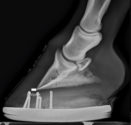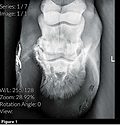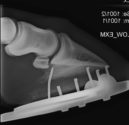Advertise Follow Us
Items Tagged with 'Radiographs'
ARTICLES
“Miracle” Horse Competitively Jumps Despite Missing Part of Coffin Bone
New Jersey farrier creates shoeing package that keeps warmblood in the show ring
Read More
Research Journal: March 2018
The information, ideas and opinions expressed are those of the author and do not necessarily represent those of the United States Department of Agriculture.
Read More
Book Review: January/February 2018
Evaluating Radiographs For Equine Foot Management By Pete Healey
Read More
Helping The Farrier Through Radiographs And MRI
Equine veterinarians survey how these advanced imaging methods can contribute to helping the farrier develop a footcare solution
Read More
How Radiographs And Joint Angles Can Guide Trimming And Shoeing
Approach avoids “dangerous” reliance on symmetry and sole landmarks
Read More
Give Your Practice A Technological Advantage
Spend less time on paperwork, get paid faster and schedule clients efficiently from the palm of your hand
Read More
Managing Conformational Faults: A Farrier’s Approach
Understanding deviations and their role in load distribution are critical
Read More
Better Practices, Better Results
Hall Of Fame vet Scott Morrison shares valuable tips for improved footcare
Read More
EVENTS
Live
Saginaw Valley Equine Clinic
11/4/17
Saginaw Valley Equine Clinic
7319 Tittabawassee Road
Saginaw, MI
United States














